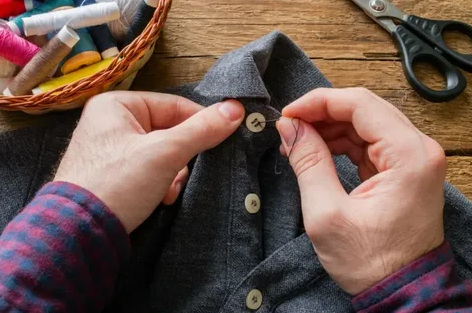Exploring The Art and Importance of Clothing Alteration
Understanding Clothing Alteration
Clothing alteration involves modifying garments to better suit an individual's body shape and preferences. Skilled tailors and seamstresses meticulously adjust various elements of clothing, including length, width, and silhouette, to achieve a flattering fit. Whether it's a wedding gown passed down through generations or a favorite pair of jeans that need resizing, alterations breathe new life into clothing, extending their lifespan and enhancing their wearability.
The Art of Tailoring
Precision and Expertise: Tailors and seamstresses possess a keen eye for detail and a mastery of sewing techniques. They carefully assess the garment's structure and fabric, devising tailored solutions to address specific fitting issues. From intricate hand-stitching to using advanced machinery, their craftsmanship ensures seamless alterations that complement the garment's original design.
Customization and Personalization: Clothing alteration allows individuals to express their unique style preferences. Whether it's adding embellishments, altering necklines, or tapering sleeves, alterations enable customization, transforming mass-produced clothing into personalized pieces that reflect individual tastes and personalities.
Restoration and Preservation: Beyond resizing and adjustments, clothing alteration plays a vital role in garment restoration and preservation. Vintage clothing, heirloom pieces, and designer garments often require delicate repairs and alterations to revive their beauty and prolong their lifespan. Skilled tailors possess the expertise to breathe new life into cherished garments, preserving their historical and sentimental value.
Significance in Fashion and Sustainability
Achieving the Perfect Fit: Ill-fitting clothing not only detracts from one's appearance but also affects comfort and confidence. Clothing alteration addresses common fitting issues such as gaping waistbands, sagging shoulders, and excess fabric, ensuring that garments accentuate the wearer's figure and enhance their overall appearance.
Sustainable Fashion Practices: In an era dominated by fast fashion and disposable clothing, clothing alteration promotes sustainable consumption habits. By investing in alterations, individuals can extend the lifespan of their clothing, reducing the need for frequent replacements and minimizing textile waste. Alterations also encourage mindful consumption, fostering a culture of appreciation for quality craftsmanship and timeless style.
Revamping Wardrobe Staples: Instead of discarding garments that no longer fit or suit one's style preferences, clothing alteration offers an opportunity to breathe new life into wardrobe staples. A simple alteration, such as adjusting the hem of a skirt or tapering the waist of a blazer, can transform outdated pieces into fashion-forward ensembles, maximizing their versatility and wearability.
Navigating the Alteration Process
Consultation and Assessment: The cloth alteration melbourne process begins with a consultation between the client and the tailor or seamstress. During this initial meeting, the client communicates their fitting preferences and requirements, while the tailor assesses the garment's construction and feasibility of alterations.
Precision Alterations: Once the alterations are agreed upon, the tailor or seamstress proceeds with precision adjustments, taking meticulous measurements and making precise alterations to achieve the desired fit. Depending on the complexity of the alterations, multiple fittings may be required to ensure accuracy and satisfaction.
Quality Assurance: Quality assurance is paramount in clothing alteration, with attention to detail being the hallmark of skilled craftsmanship. From matching thread colors to ensuring seamless seams, tailors and seamstresses uphold the highest standards of quality to deliver impeccably altered garments that exceed expectations.
Conclusion
Clothing alteration is more than just a practical necessity; it's a transformative process that celebrates individuality and craftsmanship. From enhancing fit and comfort to promoting sustainable fashion practices, alterations play a crucial role in elevating personal style and preserving garment integrity. As consumers increasingly prioritize quality over quantity and seek ways to minimize their environmental footprint, the art of clothing alteration emerges as a timeless investment in style, sustainability, and self-expression.


.png)

Comments
Post a Comment